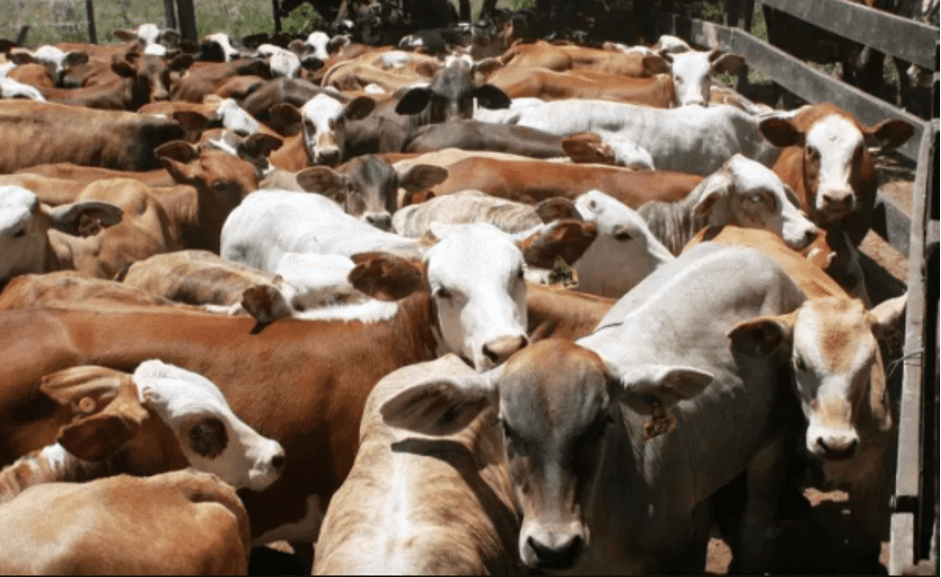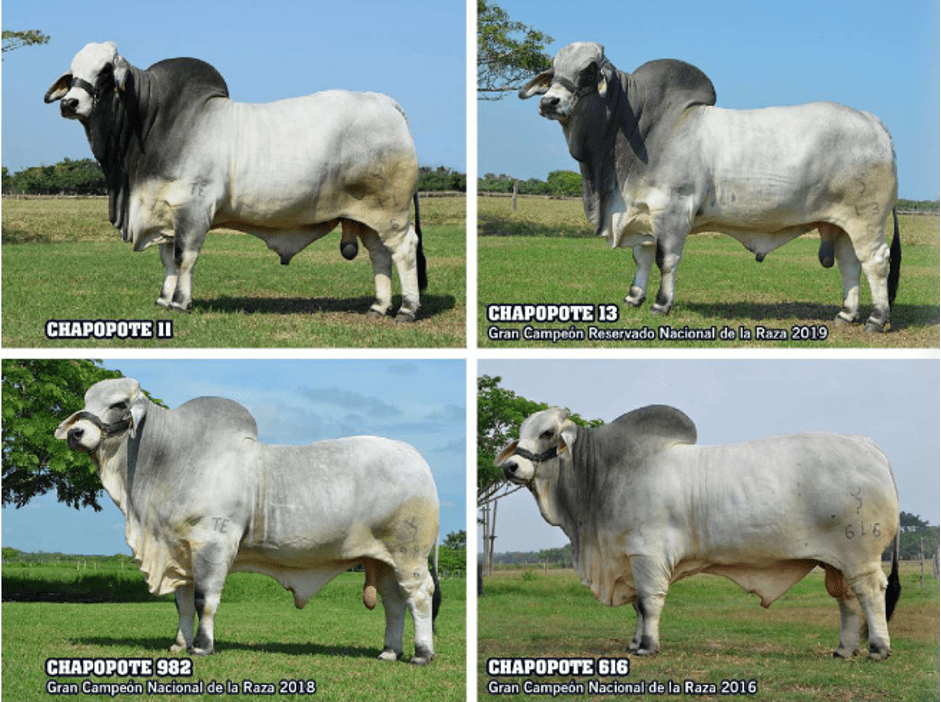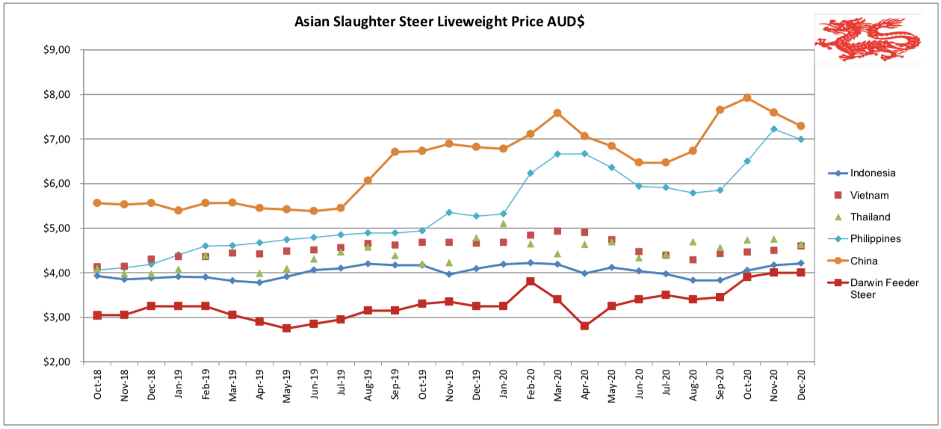INDONESIANS are understandably concerned with the sudden rise in live cattle prices especially at this time when their domestic economy is under great pressure from the pandemic.
As of last week, rises in the cost of slaughter cattle has led to the Meat Traders Association refusing to trade cattle and beef for a four-day period.
Consumers are naturally concerned with the resulting scarcity with politicians being asked to do something, but what can they do?
The underlying cause of the rise in the retail prices is the high cost of live cattle imports from Australia.
As the graph below shows the rates for feeder steers from the port of Darwin have risen over 40 percent from a low of AUD$2.80 per kg live weight in April 2020 to $4 per kg in November 2020.
At the same time, the dark blue line below shows Indonesian slaughter cattle prices (at the feedlot gate) have remained relatively constant as importers have absorbed the additional costs at the expense of their own cash flows in the hope that the rise would be short lived.
Graph: South East Asia beef report
Indonesian authorities have advised that they will target imports of 502,000 live cattle and 85,000 tons of beef during 2021 “to help plug the supply gap of meat in the domestic market. In addition Indonesia is also planning to issue import permits for 100,000 tons of Brazilian beef and water buffalo meat from India”.
With Australian live cattle so expensive, importers have searched worldwide for alternatives and found that Mexico is currently a possibility.
Mexico exports over a million head of live cattle into the USA every year so their health status is very high, certainly suitable for imports to Indonesia.
Preliminary quotes obtained by Indonesian importers suggest that by using the largest ship available, 23,000 head of feeder bulls could be delivered from Mexico to Jakarta for a CIF price of USD3.30 per kg.
This also requires multiple shipments to have any meaningful effect.
By comparison, the current CIF rates for delivery of feeder steers from Darwin is around USD$3.80 or close to AUD$5 per kg.
I have contacted an old friend from the live cattle business in Mexico and here is his response:
“Cattle prices in Mexico have been reasonably stable. The Mexican Peso has been strong against the USD at 20 peso = 1.00USD. Today you could buy Indo type young bulls 325kg average for USD$2.10/kg on farm. In the event of a shipment (in my view) these prices will jump to USD 2.35/kg on farm. My current estimates are FOB Mexican Pacific Port USD2.75/kg with CIF Indonesian port USD3.75/kg.”
Perhaps other exporters can provide a better deal. Financing such a large deal with a long lead time will also be a challenge.
In addition to the costs and logistics of the import process there are also large bureaucratic hurdles to jump as I expect that Indonesia will not have an existing live cattle import protocol established with Mexico.
Normally there would be a series of personal visits by a large number of animal health experts from Jakarta to the import destination but that will be not be possible at the moment due to the pandemic. Indonesia does have an embassy in Mexico City so they may well be able to achieve the result quickly with local staff and digital communications.
Indonesian importers know from long experience that the price of cattle in Australia is driven solely by market forces while the Indonesian government has actively held the price of fresh meat down by the threat of sanctions against lot feeders if slaughter cattle prices rise above their declared maximum.
Last year the Indonesian government dropped the 5 percent import tax on live cattle so there is little more that can be done at their end to further cut the cost of imports.
The only entity that has any scope to reduce costs is the Australian government which has recently imposed a number of additional costs onto the export industry with the introduction of ASEL 3.0 and upgraded version of the Australian Standards for the Export of Livestock.
Some of these new costs which have been in place since November 2020 include requirements for additional stockmen, more space for certain classes of stock, extra time in quarantine yards and others.
With Townsville prices for slaughter stock also rising to $4 per kg live for Vietnamese slaughter cattle it would not be surprising if they are not already investigating alternative supplies as well. As Vietnam is endemic for Foot and Mouth Disease they have many other countries to pick from such as Colombia and Brazil where cattle are much cheaper than in Mexico.
As a famous financial analyst recently said, “the cure for high prices is high prices”, meaning that if the price is so high that the customer is unable to pay then the demand disappears and the price returns to a workable level.
The market will always figure it out, the question we don’t know is how long it will take.
In the meantime the best we can do is communicate with our customers to assure them that we understand their position and that if there is anything practical that we can do to assist then we will do our best to help.

Internet photo of Mexican feeder cattle from Losagronegocos.UY. magazine showing that the types of cattle available are similar to those sourced from Australia.

Photo from the Mexican brahman breeders magazine. Their brahman genetics are mainly imported from the USA resulting in a domestic tropical herd with very similar to the genetics in northern Australia.

